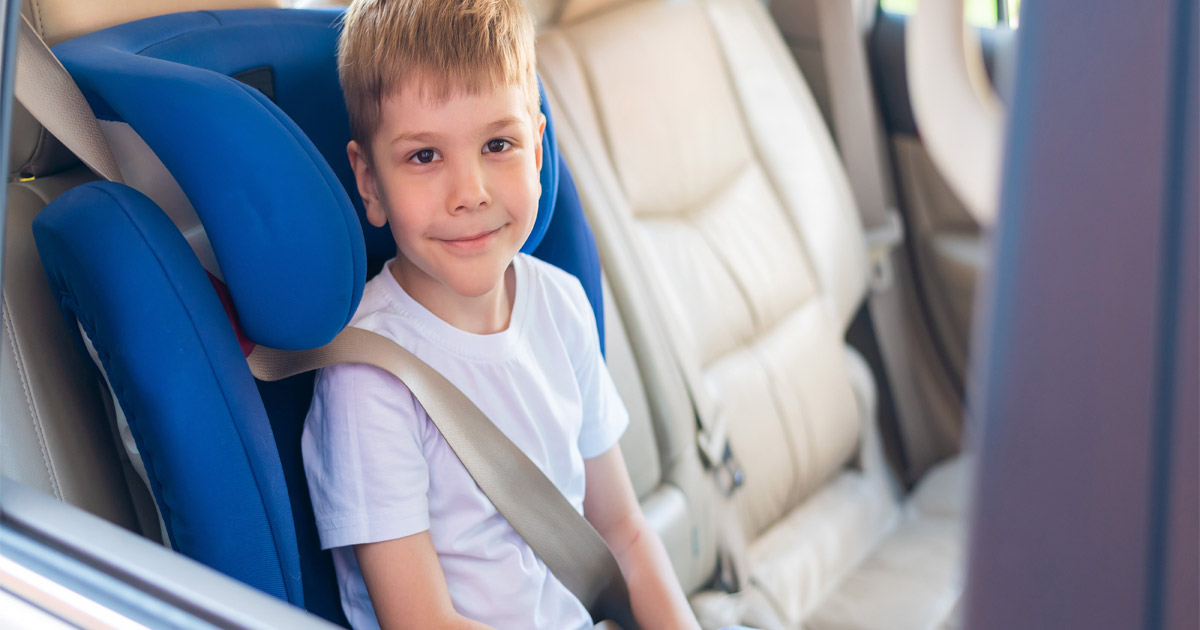September 28, 2022
What Are Common Car Accident Injuries Among Children?

Sometimes, children may seem indestructible, judging by how hard they play. They fall, crash their bicycles, and generally tend to bounce back in surprising ways.
Unfortunately, children are more prone to suffering serious or deadly auto accident injuries than most adults. Children’s muscles and bone structure also are still developing and are more fragile than adults’, so they do not have the same natural bodily protection that most adults do.
Another complicating factor is that children’s bodies are smaller than those of adults, which makes seat belts and airbags less effective at protecting them during accidents. If you are driving with a baby or small child, state law requires you to use a child safety seat to better protect the child if an accident occurs.
Because of their smaller body size, airbags could cause potentially deadly injuries to children. The force created by a deployed airbag might strike a small child in the head or neck, causing a deadly fracture.
Car Accident Injuries Commonly Suffered by Children
The impact of even a low-speed collision could be enough to cause serious and potentially life-threatening injuries to a child passenger. That is especially true if a child is too small for seat belts and you did not install a child safety seat properly, which commonly occurs.
The types of car accident injuries that children commonly suffer include:
- Broken bones
- Head injuries
- Internal injuries
- Spinal cord injuries
- Whiplash
The potential for children suffering broken bones is very high in virtually any type of car collision. Their smaller and less dense bone structures make children highly vulnerable to breaking bones when they are rocked violently during a car accident.
Head injuries are common due in part to the potential for a child’s head striking against a door, window, or the dashboard.
Internal injuries are common among children in car accidents. They do not have the same rigid rib cage as adults, and their abdomen generally lacks the muscular protection of an adult.
Child passengers also are vulnerable to suffering spinal cord injuries because of the energy and force of the impact. Their spines are not fully developed and their muscular structure is not strong enough to help keep the spinal cord intact during a collision.
The force of a collision also could cause whiplash because children’s neck muscles are not very strong.
How to Make Your Children Safer as Passengers?
Many injuries might affect your child passenger, but you could take some basic precautions to help protect them while in the family vehicle.
If your child is very small, you should use a child safety seat and double-check it before each trip to ensure it is installed properly. You also need to ensure you are securing your child properly in the child safety seat, with belts and straps secured and across the appropriate areas to protect them in the event of a crash. Sometimes, more active children will tuck a seatbelt under their armpit to prevent it from touching their neck, but this then renders the seatbelt less effective. If this is the case with your child, there are many seatbelt adjusters on the market to help them find a comfortable solution that keeps them safe.
Improper installation and use of child safety seats often render them ineffective. Only properly installed safety seats work as intended so that your child will enjoy a greater level of protection. Read the instructions for seat installation and check the fit and security of the seat regularly as your child grows to ensure they are getting the safest fit. Check your state’s laws for child safety seat mandates and guidelines. In Pennsylvania, all children under the age of two must ride in a rear-facing car seat in the back seat of a vehicle. The same law mandating rear-facing seats for children under two has recently been updated to match the National Highway Traffic Safety Administration’s guidelines, which states that children under the age of eight, less than 57 inches tall, and less than 80 pounds must be in a car seat or booster seat that meets the U.S. Department of Transportation’s standards. Additionally, children between the ages of eight and 13 need to sit in the backseat and wear a three-point seatbelt that goes across the shoulders, chest, and lap.
Most recently built vehicles have passenger airbags that you can turn off. You should switch off the passenger airbags where one or more children are seated to help prevent an airbag injury, including side-wall airbags in the backseat that may impact a child seated behind the front row.
Seating small children in the back seat also will help to give them protection in a collision. Instead of having a dashboard in front of them, they would have the relatively soft backside of the front seats to help absorb any impact if the car is rear-ended. Seating small children in the back also puts a stopgap between the child and the windshield in the event of a higher-speed crash.
A Delaware County Car Accident Lawyer at Anthony C. Gagliano III Helps Accident Survivors to Hold Liable Parties Accountable.
If one or more of your children suffered injuries in an accident, an experienced Delaware County car accident lawyer at Anthony C. Gagliano III, P.C., can help. You can call 267-861-7100 or contact us online to schedule a free consultation at our law offices in Philadelphia and King of Prussia, Pennsylvania. Our clients are located in Philadelphia, Montgomery County, Delaware County, Bucks County, Chester County, Norristown, and throughout Pennsylvania.